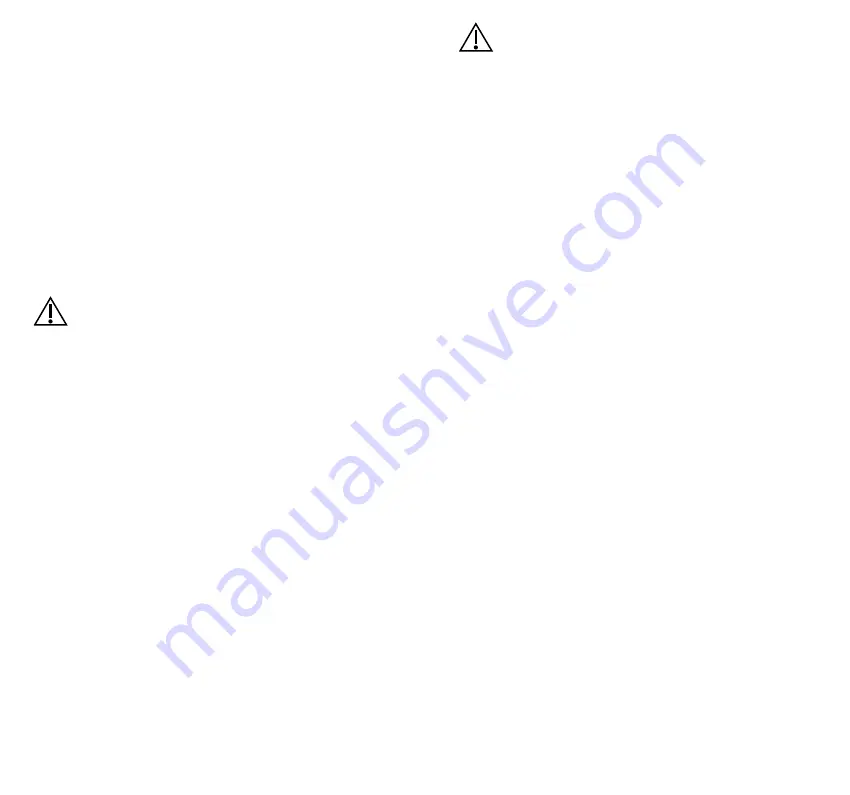
18
19
Note: If a different type of wax filter is used for your hearing
instruments, or if your hearing instruments do not utilize wax
filters, consult your hearing care professional for proper in-
struction.
temperature test, transport and storage informa-
tion
GN ReSound Hearing Instruments are subjected to various
tests in temperature and damp heating cycling between
-25C (-13F) and +70C (+158F) according to internal and in-
dustry standards. During transport or storage, the tempera-
ture should not exceed the limit values of -20C (-4F) to +60C
(+140F) and relative humidity of 90% RH, non-condensing (for
limited time). The air pressure between 500 and 1100 hPa is
appropriate.
General precautions
1. Do not leave hearing instruments in the sun, near an open
fire, or in a hot, parked car.
2. Do not wear hearing instruments while showering, swim-
ming, in heavy rain, or in a moist atmosphere such as a
steam bath or sauna.
3. Should the hearing instrument become moist, remove the
battery and place the hearing instrument in a closed con-
tainer with a drying agent. Your hearing care professional
can provide options for drying containers or kits.
4. Remove the hearing instruments when applying items
such as cosmetics, perfume, after shave, hair spray, and
suntan lotion.
5. Use only original ReSound consumables e.g. tubes and
domes.
6. Only connect ReSound hearing instruments to ReSound
accessories intended and qualified to be used with Re-
Sound hearing instruments.
7. Never attempt to modify the shape of the hearing instru-
ment, ear-earmolds, or tubing yourself.
General warnings
1. Consult a hearing care professional if you discover a
foreign object in your ear canal, if you experience skin
irritation, or if excessive ear wax accumulates with the use
of the hearing instrument.
2. Different types of radiation, from e.g. NMR, MRI, or CT
scanners, may damage hearing instruments. It is recom-
mended not to wear hearing instruments during these
or other similar procedures. Other types of radiation,
such as burglar alarms, room surveillance systems, radio
equipment, mobile telephones, contain less energy and
will not damage hearing instruments. However, they have
the potential to momentarily affect the sound quality or
temporarily create strange sounds from hearing instru-
ments.
3. Do not wear hearing instruments in mines, oil fields, or
other explosive areas unless those areas are certified for
hearing instrument use.
4. Do not allow others to use your hearing instruments. This
may cause damage to the hearing instruments or to the
hearing of the other individual.
5. Instrument usage by children or mentally challenged
persons should be supervised at all times to ensure their
safety.
The hearing instrument contains small parts that could
be swallowed by children. Please be mindful not to leave
children unsupervised with this hearing instrument.
6. Hearing instruments should be used only as prescribed
by your hearing care professional. Incorrect use may
result in hearing loss.
7. External devices connected to the electrical input must
be safe according to the requirements of IEC 60601-1-1,
IEC 60065, or IEC 60950-1, as appropriate
8. If device is broken, do not use.
Содержание Vea Series
Страница 1: ...USER GUIDE Custom Models CIC COMPLETELY IN CANAL ITC In the canal ITE In the ear...
Страница 14: ...26 27...
































